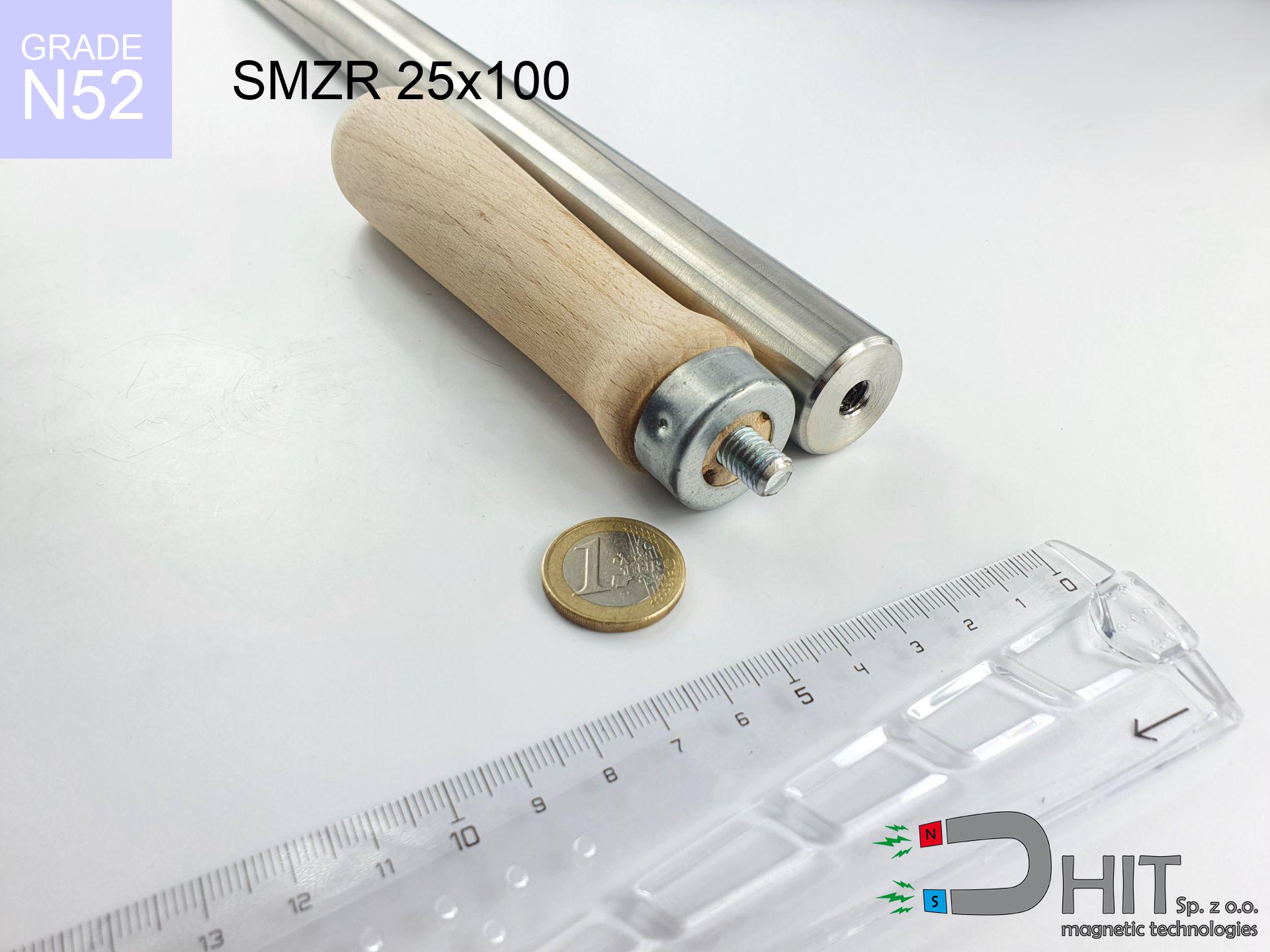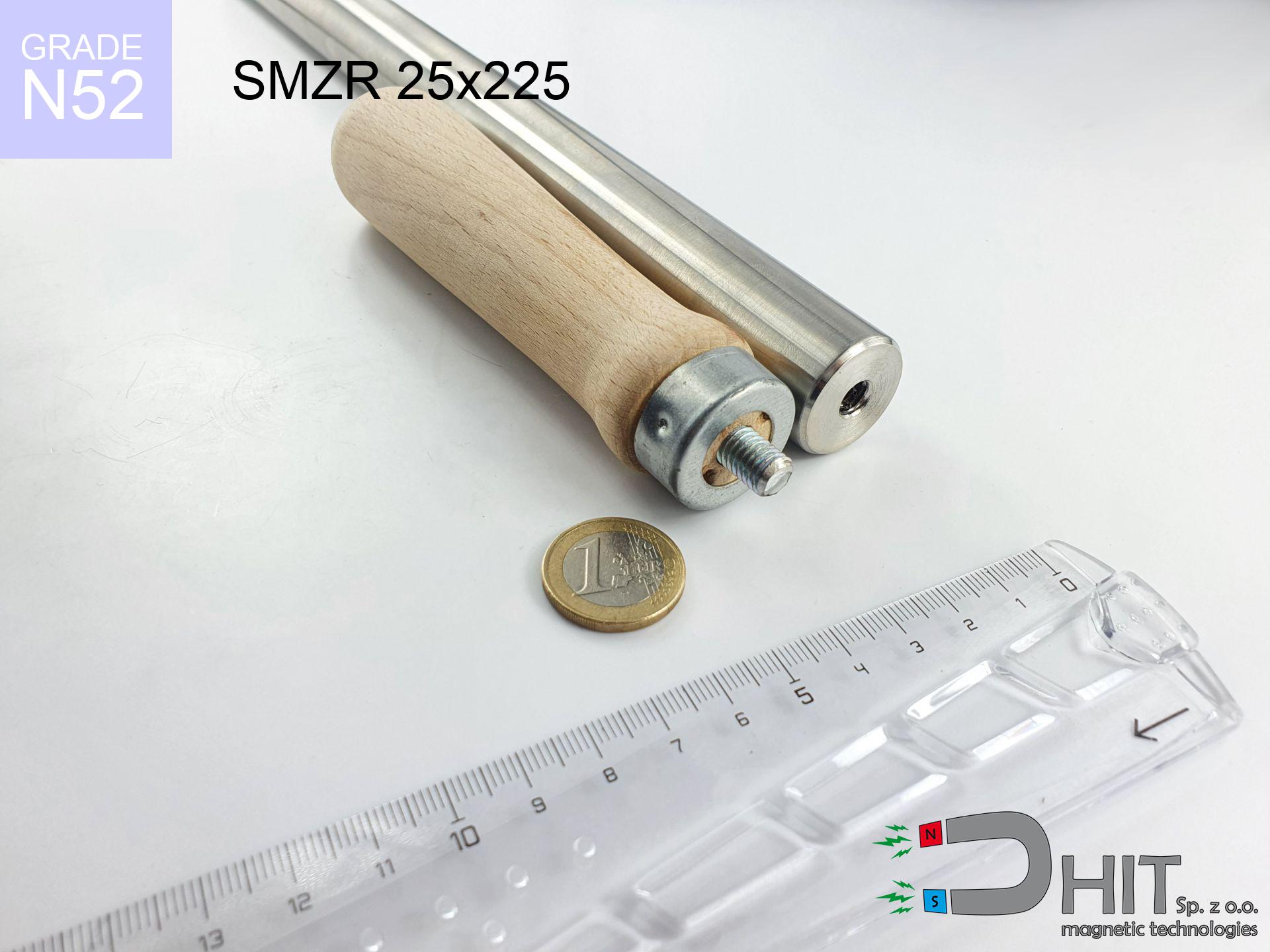SMZR 25x100 / N52 - magnetic roller
magnetic separator with handle
catalog number 140232
GTIN: 5906301813408
diameter Ø
25
mm [±0,1 mm]
height
100
mm [±0,1 mm]
max. temperature
≤ 80
°C
catalog number 140232
GTIN: 5906301813408
diameter Ø
25 mm [±0,1 mm]
height
100 mm [±0,1 mm]
max. temperature
≤ 80 °C
307.50 ZŁ gross price (including VAT) / pcs +
250.00 ZŁ net price + 23% VAT / pcs
bulk discounts:
need more quantity?Do you have a problem in choosing?
Give us a call tel: +48 22 499 98 98 or write through contact form on our website. You can check the power as well as the appearance of magnet in our power calculator magnetic calculator
Orders placed by 2:00 PM will be shipped on the same business day.
Specification: magnetic separator with handle 25x100 / N52
Magnetic properties of the material N52
Physical properties of sintered neodymium magnets Nd2Fe14B
Shopping tips
Advantages as well as disadvantages of neodymium magnets NdFeB.
Apart from immense power, neodymium magnets have the following advantages:
- They do not lose their strength (of the magnet). After approximately 10 years, their strength decreases by only ~1% (theoretically),
- They protect against demagnetization caused by external magnetic sources extremely well,
- In other words, thanks to the shiny coating of nickel, gold, or silver, the element acquires an aesthetic appearance,
- They possess very high magnetic induction on the surface of the magnet,
- Magnetic neodymium magnets are characterized by hugely high magnetic induction on the surface of the magnet and can operate (depending on the form) even at temperatures of 230°C or higher...
- Thanks to the flexibility in shaping or the ability to adapt to specific requirements – neodymium magnets can be produced in many variants of shapes and sizes, which amplifies their universality in usage.
- Wide application in the industry of new technologies – are used in computer drives, electric drive mechanisms, medical equipment or very advanced devices.
Disadvantages of neodymium magnets:
- They are fragile when subjected to a powerful impact. If the magnets are exposed to impacts, we recommend using magnets in a metal holder. The steel housing in the form of a holder protects the magnet from impacts, and at the same time increases its overall strength,
- They lose strength at high temperatures. Most neodymium magnets experience permanent loss of strength when heated above 80°C (depending on the form and height). However, we also offer special magnets with high temperature resistance, up to 230°C,
- Magnets exposed to a humid environment can corrode. Therefore, when using them outdoors, we suggest using waterproof magnets made of rubber, plastic, or other moisture-resistant materials,
- The use of a cover or a magnetic holder is recommended due to the limited possibilities of manufacturing threads or complex shapes in the magnet
- Possible danger associated with microscopic parts of magnets pose a threat, in case of ingestion, which is particularly important in the context of children's health. It's also worth noting that small elements of these devices have the potential to complicate diagnosis after entering the body.
Exercise Caution with Neodymium Magnets
Keep neodymium magnets away from the wallet, computer, and TV.
Strong fields generated by neodymium magnets can damage magnetic storage media such as floppy disks, credit cards, magnetic ID cards, cassette tapes, video tapes, or other similar devices. In addition, they can damage televisions, VCRs, computer monitors, and CRT displays. You should especially avoid placing neodymium magnets near electronic devices.
Dust and powder from neodymium magnets are flammable.
Do not attempt to drill into neodymium magnets. Mechanical processing is also not recommended. Once crushed into fine powder or dust, this material becomes highly flammable.
Keep neodymium magnets away from people with pacemakers.
In the case of neodymium magnets, there is a strong magnetic field. As a result, it interferes with the operation of a heart pacemaker. Even if the magnetic field does not affect the device, it can damage its components or deactivate the entire device.
Do not bring neodymium magnets close to GPS and smartphones.
Magnetic fields generated by neodymium magnets interfere with compasses and magnetometers used in navigation, as well as internal compasses of smartphones and GPS devices.
Neodymium magnets are over 10 times more powerful than ferrite magnets (the ones in speakers), and their strength can shock you.
To use magnets properly, it is best to familiarize yourself with our information beforehand. This will help you avoid significant harm to your body and the magnets themselves.
Avoid contact with neodymium magnets if you have a nickel allergy.
Studies show a small percentage of people have allergies to certain metals, including nickel. An allergic reaction often manifests as skin redness and rash. If you have a nickel allergy, try wearing gloves or avoid direct contact with nickel-plated neodymium magnets.
It is important to keep neodymium magnets out of reach from children.
Neodymium magnets are not toys. You cannot allow them to become toys for children. In such a situation, surgery is necessary to remove them. In the worst case scenario, it can result in death.
Neodymium magnets can become demagnetized at high temperatures.
Although magnets have demonstrated their effectiveness up to 80°C or 175°F, the temperature can vary depending on the type, shape, and intended use of the specific magnet.
Neodymium magnets are primarily characterized by their significant internal force. They attract to each other, and any object that comes in their way will be affected.
Magnets will jump and clash together within a distance of several to around 10 cm from each other.
Neodymium magnetic are fragile as well as can easily crack and shatter.
Neodymium magnetic are extremely delicate, and by joining them in an uncontrolled manner, they will break. Magnets made of neodymium are made of metal and coated with a shiny nickel, but they are not as durable as steel. At the moment of collision between the magnets, small metal fragments can be dispersed in different directions.
Please see the article - What danger lies in neodymium magnets? You will learn how to handle them properly.



![magnetic holder rubber internal thread 43x6 [M4] GW / N38 magnetic holder rubber internal thread 43x6 [M4] GW / N38](https://cdn3.dhit.pl/graphics/products/umg-43x6-m6-gw-hel.jpg)
![magnetic separator 32x175 [2xM8] / N42 magnetic separator 32x175 [2xM8] / N42](https://cdn3.dhit.pl/graphics/products/sm-32x175-2xm8-tej.jpg)



